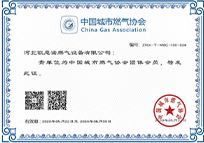
Aug . 12, 2024 06:40
Back to list
Understanding the Principles and Applications of Gas Heat Exchangers in Modern Engineering Systems
Understanding Heat Exchangers for Gases
Heat exchangers are critical components in various industrial processes, playing a pivotal role in transferring thermal energy between different fluids. When it comes to gas applications, the design and efficiency of heat exchangers become even more crucial due to the unique properties and behaviors of gases compared to liquids.
What is a Heat Exchanger?
A heat exchanger is a device designed to efficiently transfer heat from one medium to another without mixing them. In gas applications, this can involve transferring heat between gases or between gases and liquids. The primary objective is often to recover waste heat, thereby improving overall energy efficiency and reducing operational costs.
Types of Heat Exchangers
There are several types of heat exchangers commonly used for gases
1. Shell and Tube Heat Exchangers This type consists of a series of tubes, one set carrying the hot gas and the other the cold gas or fluid. The design allows for effective heat transfer and is widely used in various industries.
2. Plate Heat Exchangers Made up of multiple thin, corrugated plates, this type offers a larger surface area for heat exchange in a compact form. They are particularly suitable for applications requiring high thermal efficiency.
3. Air-Cooled Heat Exchangers These are used when cooling gases in an environment without water. They utilize air flow, driven either by natural or forced convection, to cool the gas passing through the heat exchanger.
4. Double-Pipe Heat Exchangers The simplest design, consisting of one pipe inside another. The hot gas flows through the inner pipe while the cold fluid flows in the outer one, allowing for basic heat transfer.
.
The efficiency of a heat exchanger is influenced by various factors, including
مبادل حراري للغاز

- Surface Area The larger the surface area available for heat transfer, the more efficient the heat exchange process. - Temperature Difference A greater temperature difference between the two fluids generally leads to increased heat transfer rates.
- Flow Arrangement Heat exchangers can be designed in co-current, counter-current, or cross-flow arrangements. Counter-current designs are often more efficient because they maintain a greater temperature difference across the heat exchanger length.
- Material Selection The choice of materials can affect conductivity. Materials with higher thermal conductivity (like copper or aluminum) enhance heat transfer efficiency.
Applications of Gas Heat Exchangers
Heat exchangers for gases are utilized in various applications, including
- Power Generation Recovery of heat from exhaust gases in gas turbines improves efficiency.
- Chemical Processing Controlling temperatures in reactors often necessitates efficient heat exchange.
- HVAC Systems They are essential in heating and cooling systems to maintain desired indoor temperatures.
- Natural Gas Processing Heat exchangers are crucial in separating components of natural gas and ensuring optimal conditions for various processes.
Conclusion
As we look towards more energy-efficient solutions in industrial processes, the role of heat exchangers in managing gas heat transfer becomes increasingly significant. With advancements in materials and design, the efficiency and effectiveness of these systems continue to improve, offering benefits not only in terms of energy savings but also in environmental sustainability. As industries evolve, so too will the technologies surrounding heat exchange, paving the way for innovation in thermal management systems.
Latest news
-
Safety Valve Spring-Loaded Design Overpressure ProtectionNewsJul.25,2025
-
Precision Voltage Regulator AC5 Accuracy Grade PerformanceNewsJul.25,2025
-
Natural Gas Pressure Regulating Skid Industrial Pipeline ApplicationsNewsJul.25,2025
-
Natural Gas Filter Stainless Steel Mesh Element DesignNewsJul.25,2025
-
Gas Pressure Regulator Valve Direct-Acting Spring-Loaded DesignNewsJul.25,2025
-
Decompression Equipment Multi-Stage Heat Exchange System DesignNewsJul.25,2025

